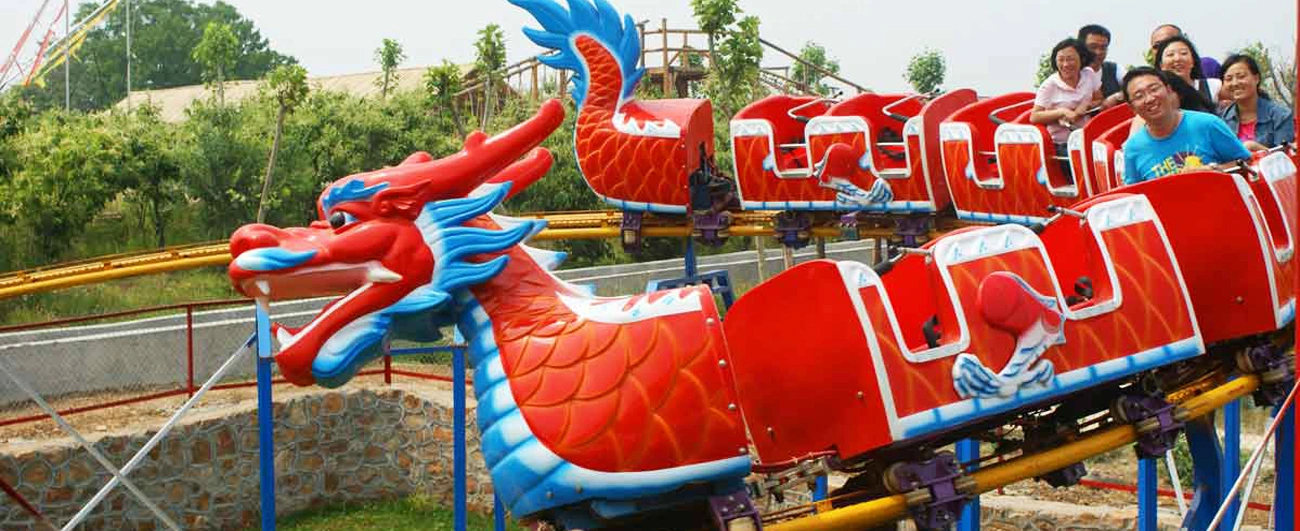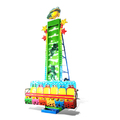The amusement ride industry thrives on spectacle, cultural resonance, and engineering ingenuity. National trend amusement rides, in particular, reflect local heritage while delivering universal thrills. By integrating traditional motifs into mechanical marvels, these attractions captivate audiences with a blend of nostalgia and novelty. This article explores the underlying design inspirations that drive contemporary interpretations of culturally themed rides, using examples such as the wacky worm roller coaster and dragon roller coaster.
Fusion of Folklore and Ride Dynamics
Harnessing Cultural Archetypes
At the core of any national trend amusement ride lies a narrative. This is where folklore—rich with dragons, serpents, mythical creatures, and anthropomorphized animals—proves invaluable. The dragon roller coaster is a quintessential example. Designed to mirror the sinuous movement of traditional Chinese dragons seen in Lunar New Year parades, the ride marries serpentine track layouts with kinetic storytelling.

The train's undulating cars, stylized with ornate dragon heads and scaled textures, replicate the form of a mythological beast in motion. Designers often leverage regional materials, color schemes, and iconographic patterns to amplify authenticity, reinforcing emotional connections between the ride and the cultural psyche of the audience.
The Whimsy of the Wacky Worm
Conversely, the wacky worm roller coaster draws inspiration from children's literature and agrarian symbolism. Its design language—vivid greens, cartoonish facial features, and exaggerated body segments—evokes playfulness. The worm archetype is commonly associated with transformation and growth, making it ideal for a ride targeting young audiences.

Despite its simplicity, the wacky worm utilizes compact helical turns and gentle dips to simulate adventure in a safe, inviting form. It represents a confluence of aesthetic design and ergonomic ride profiling.
Structural Expressionism
Form Echoes Function
One hallmark of successful national trend amusement rides is the alignment between structural elements and thematic motifs. For instance, in dragon roller coasters, spine-like spine track supports and tail-fin embellishments are often welded onto load-bearing trusses. This isn’t merely cosmetic—every extension must adhere to stringent ISO and ASTM F24 safety standards.
Modern fabrication techniques, such as laser-cut steel plate overlays and thermoformed fiberglass claddings, permit greater freedom in mimicking organic contours without compromising stability. Ride architecture becomes a form of structural expressionism—where mechanical parts do double duty as visual storytelling elements.
Kinetic Synchronization
Beyond aesthetics, motion profiles are calibrated to complement theme resonance. Designers manipulate acceleration curves, lateral G-forces, and pacing to emulate naturalistic movements. A dragon’s “leap” over a village or a worm’s “dive” into a burrow is realized through sharp camelback humps or sudden helix descents. This synchronization transforms mechanical velocity into visceral drama.
Lighting and Sound Integration
Chromatic Psychology
The use of lighting in national trend rides extends beyond mere visibility. It influences perception, emotion, and narrative engagement. Dragon-themed rides frequently employ warm gradients—crimson, amber, and gold—to evoke imperial power and festivity. In contrast, wacky worm rides may use cooler palettes interspersed with flashing LEDs to suggest a garden-like ambiance during nocturnal operations.
Programmable RGB systems allow real-time modulation of lighting sequences. Integrated with PLC (Programmable Logic Controller) ride software, these lights can pulse in time with vehicle movements or soundtrack beats, crafting a choreographed experience.
Sonic Layering
Sound design, often an afterthought in legacy rides, has emerged as a cornerstone of modern themed ride experiences. Ambient audio, synced engine hums, mythic roars, and cheerful jingles create a multisensory envelope. In dragon roller coasters, bass-heavy drones and intermittent gong strikes may punctuate major ride transitions, enhancing tension and release.
For the wacky worm, designers favor upbeat melodies, laughter loops, and insectoid chirps to sustain a whimsical, child-centric tone. Directional speakers embedded within headrests or station platforms enable sonic localization, heightening immersion.
Materiality and Texture Design
Tactile Realism
Surface finishes contribute significantly to rider perception. Faux-scale textures on dragon coasters, achieved through airbrushed vinyl skins or molded epoxy resin, give the illusion of a living creature. These tactile enhancements also improve photogenicity—an important aspect in today’s image-sharing culture.
Likewise, wacky worm designs utilize matte paints and soft-touch polymer coatings for a toy-like feel. Attention to microtexture enhances realism and ensures weather resilience, especially under UV exposure or high-humidity conditions.
Sustainable Construction
With rising environmental awareness, modern ride manufacturers are pivoting towards eco-friendly materials. Recycled HDPE plastics, low-VOC paints, and solar-integrated lighting arrays are increasingly standard. Not only do they reduce environmental impact, but they also align with the values of younger audiences and municipal park zoning requirements.
Interactivity and Modular Design
Gamification Elements
Modern national trend rides are increasingly adopting gamified features. Interactive buttons, onboard score trackers, and augmented reality overlays can now be embedded into vehicle consoles or mobile apps. These features turn passive riders into active participants.
On some wacky worm roller coasters, touch-sensitive panels trigger animations during the ride. Dragon coasters may incorporate AR glasses that superimpose fire-breathing effects or virtual enemies to “battle,” deepening the storytelling experience.
Modularity and Customization
One logistical advantage of rides like the wacky worm is their modularity. Their track sections, train configurations, and facade panels are easily interchangeable, allowing operators to update themes seasonally or rebrand for different events. This adaptability maximizes return on investment while preserving novelty.
Conclusion
National trend amusement rides are a testament to the versatility of thematic engineering. By synthesizing folklore, kinetic design, material science, and interactive media, designers create attractions that resonate on both emotional and experiential levels. The dragon roller coaster stands as an emblem of majestic storytelling, while the wacky worm roller coaster champions accessibility and imagination. Each, in its own domain, exemplifies how cultural narratives can be translated into mechanical form.
As the industry evolves, these inspirations will not only continue to honor heritage but also redefine the boundaries of what amusement rides can represent.





